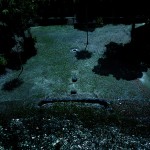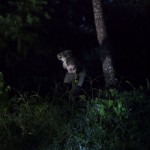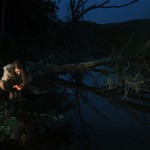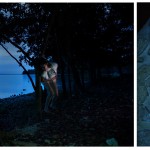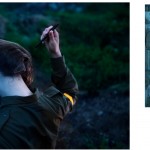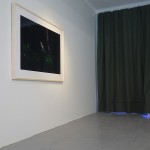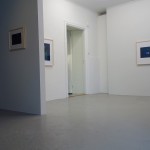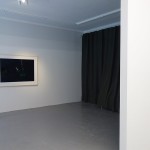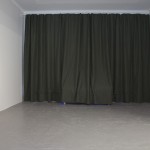Wayob: Galleri Fagerstedt, Stockholm April 6 – May 6, 2017 and performance May 2.
The work in this exhibition is the outcome of a research journey undertaken by artist Per Huttner and fashion designer Emilia Rota in Guatemala and El Salvador in May and June 2016. The investigation set out to understand the concept of “wayob” which in both ancient and contemporary Mayan language mean “sleeping.” But sleep here also indicates “nagual” which means a capacity to transform one self into animal and to move between different realities. In other words, in Mayan ontology a person is made up of three parts: a waking self, a sleeping self and an animal self.
For a westerner, the meeting with wayob is therefore a meeting between two profoundly different worldviews, not only on identity, but on the constitution of nature and the universe. In order to interact with this outlook, one has to reconsider basic conceptions about nature and our own individual place in the world. The project creates bridges between worldviews from different times and different places. In a reality of infinite movement where there are also different layers, there is a need for dialogue between the different parallel worlds. There is a need for the “nagual” or a trickster. Characters like these recur in many indigenous Amerindian cultures. The trickster is dualistic someone who can both protect and cause harm. The photographic images depict transformations: people, creatures, characters in process of becoming something else and moving between worlds. They also depict the sensuality that can be associated with such transgressions, journeys and the potential that is inherent in the rediscovery of our bodies. Emilia Rota writes
“I chose to create a uniform in similar way that it has been used in counterculture, bringing out all that it can inspire more disturbing and oprimating: strength, power, sexuality. This character thus modeled frees himself of these qualities once he realizes that he has unintentionally adopted this uniform as a second unreal skin. The animal was inspired by Barbarella, the guardian of peace in space in a world where sensuality is part of the balance of the world.”
In the sculpture is made up of curtain that covers the back wall of the gallery. A bed protrudes mysteriously a few inches from the wall, disappearing into another world. The curtain is made of the same material as one of the characters in the photos wear. Along the bottom light moves back and forward according to a complicated and unpredictable pattern. The light is a translation of the artist’s brain activity under hypnosis. A shaman’s brain’s patterns when he/she is communicating with another world is very similar to the patterns under hypnosis. The artist was hypnotised by Hernan Anllo and the recording was made at École normale supérieure in Paris in November 2016 with a team of international neuroscientists. The sculpture uses special technology, called the EEGsynth, that has been developed by the artist in dialogue with neuroscientists in France and Holland over the last three years. Huttner is also a founding member of 1+1=3 which is group that stages performances using real-time EEG-recordings.
Performance
On May 2, Huttner together with dancer and choreographer Carima Neusser as well as composer Siri Jennefelt will present a collaborative performance entitled “Start in the Middle.” The event moves in a zone between lecture and meditation and allows the audience to investigate the relationship between body and thought.
No one knows what the limits of the human body are. Every day a sportsman sets a new record; a yogi pushes his or her mind further and a team of researchers develops a new drug that can change the chemistry of our inner. The examples show the human body’s capability of breaking new ground, taking humanity to experiences never lived before. They also show that human thought and human bodies can interact in an infinity of ways and that they constantly create new alliances.
So what do we do to push the boundaries on a personal level to overcome ourselves and our own boundaries? Are we prisoners of our worldviews, fears and pragmatism? Can we gain something by letting go of control and embrace the unknown and the possibly dangerous? The performance investigates what can art, dance and music do together to support human development in relation to these questions.
Liminal Curtain has been developed in collaboration with 1+1=3 using the EEGsynth technology and with kind support from Kulturbryggan. The exhibition is supported by Vision Forum.

